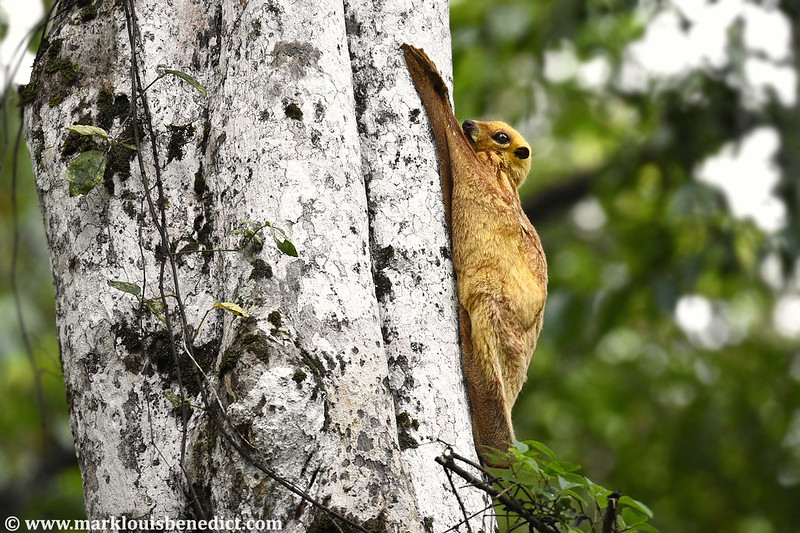Sunda Colugo Facts
- Most notably, the Sunda Colugo remains a rare and extremely unusual animal. It also represents one of only three known species in its genus.
- Though the existence of this fascinating animal remains well-known, it has not yet been extensively studied, however.
- While often referred to as a flying lemur, the Sunda Colugo neither flies nor has a relationship to the lemur. It does glide from tree to tree, though.
- This animal has the status of a protected species within most of its habitat range. However, its existence remains threatened by a combination of habitat loss, deforestation, and localized illegal hunting.
- Finally, this animal appears to be highly dependent on a specific habitat for its survival.
Related Articles
Sunda Colugo Physical Description
Firstly, the adult Sunda Colugo attains an average body length of roughly 15 in (38 cm). In addition, the tail averages about 10 in (25 cm) in length.
The fascinating small animal understandably remains a rather light creature, attaining a maximum recorded weight of only 2.9 lb (1.3 kg).
In coloring, it also most commonly presents a seemingly random combination of black, gray, and brown, serving as camouflage.
- Kingdom: Animalia
- Phylum: Chordata
- Class: Mammalia
- Order: Dermoptera
- Family: Cynocephalidae
- Genus: Galeopterus
- Species: G. variegatus
Sunda Colugo Distribution, Habitat, and Ecology
Most notably, the Sunda Colugo occurs across a wide range of Southeast Asia. Further, this range includes a total of twelve countries in the region, as well as numerous islands.
Despite this wide range, it has been little studied due to the nature of its preferred habitat. The creature prefers to inhabit rather dense forest regions.
Firstly, this primarily includes lowland and mountain forests. However, deforestation and the resulting loss of habitat has begun to force it to migrate into rubber and coconut plantations, and even sometimes large gardens.
The creature also evolved as strictly arboreal and remains a skilled climber, leaper, and glider. If forced to the ground individuals are slow and ungainly, however.
Finally, the animal is primarily nocturnal in behavior, and its diet consists principally of flowers, leaves, shoots, and small fruits.
Species Sharing Its Range
Check out our other articles on North American Gulches and Canyons, Maned Wolf, Great Dismal Swamp, Chickasaw Plum, Sydney Funnel-web Spider, Spiny Butterfly Ray, Hermann’s Tortoise

